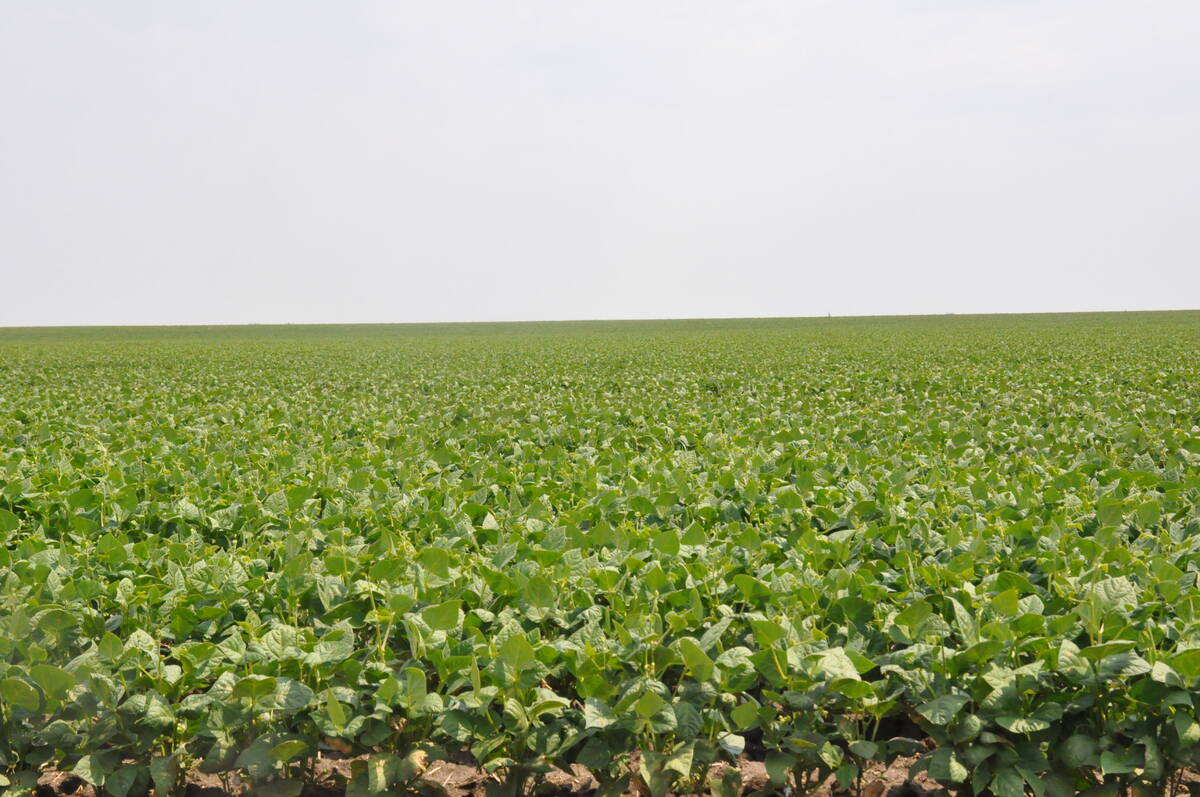WINNIPEG – Frustrations with tortillas that tear and ooze their
stuffings at family meals led a Manitoba cereal chemist to create a
better wrap.
Nancy Ames looked to the elasticity and starch of barley, which is more
commonly grown on the Prairies than the corn used in many tortillas.
While studying barley noodles’ stretchy, sticky qualities at
Agriculture Canada’s Cereal Research Centre in Winnipeg, Ames began to
think about other uses for waxy barley. She quickly realized from her
Read Also

Coloured bean production down, whites are up
Bean prices have been slumping and the outlook is for more of the same.
own experience at home how these dough properties would work well for
wraps such as tortillas and pitas.
Her research has shown that waxy barley makes tasty tortillas that keep
fresh longer and are less likely to break on a store or fridge shelf.
They have a host of nutritional benefits, with a high content of
insoluble fibre, vitamin E and beta-glucan, which helps lower
cholesterol. They are also low in fat and virtually gluten-free, a
bonus for those with wheat allergies.
Ames continues to tweak the flour blends and milling and baking
processes as she strives to build on what she has already learned from
the research that began in 1999. It has included input from other
western Canadian researchers and has taken her to Texas A & M
University to learn more about
creating a barley tortilla.
That led to the development of barley taco chips, which, with
tortillas, have already been commercially processed on a small scale
for testing by La Cocina Foods of Ste. Anne, Man. Ames said response in
taste tests has been generally positive.
La Cocina owner Peter Warkentin said different fillings would likely
enhance the barley tortillas’ unique flavour.
“A person used to eating corn might be disappointed biting into one of
these,” said Warkentin, who found the tortillas rubbery and easier to
roll than corn ones.
Darren Ramlal, commercialization officer at the Cereal Research Centre,
is responsible for getting innovations such as barley tortillas from
the lab to stores. He said there has already been interest in the
project, although more work is needed.
“We don’t want to risk this before we are pretty sure we have something
that can go to market,” he said, noting a strong and lasting first
impression must be made with consumers.
Ramlal said CRC studied the production, manufacturing and distribution
capabilities of various snack food makers, looking for Manitoba or
Canadian companies, “a reasonable financial projection” and a benefit
to Canadian consumers.
“It’s a targeted approach, not a shotgun one,” he said.
The centre then invited selected companies to submit proposals,
business plans and research and development outlines.
“If they have no expertise and just see it as an opportunity, we would
consider it more of a risk.”
He said barley chips and tortillas are a good fit with Agriculture
Canada’s new strategic framework that puts consumer needs first.
These products are also highly visible and can move from lab to store
relatively quickly.
Typically it takes a company five to 10 years to get a licence to
produce and sell products. In the meantime, a patent is pending on
these barley products.
Ramlal called snack food a “fun, glamorous industry.” It’s also
lucrative, with tortillas making up a $4 billion US a year industry in
the United States.
It’s fast growing, too. The value of Canadian shipments of potato
chips, tortilla chips, pretzels, popcorn and cheese snacks have grown
45 percent from $796.4 million in 1990 to $1.16 billion in 1998,
according to Agriculture Canada.
Warkentin said there is a lot of competition among snack foods, but
expects tacos and tortillas’ popularity to continue to grow in Canada.
Wheat tortillas remain the most popular of wraps, he added.
He compared the thicker, harder barley chips to Sun Chips now on the
market.
“It would be for people who like that barley taste.”
He found that barley tacos often stuck to the rollers during
processing, but tortillas were easier to produce. The barley also
created a few problems for him and other staff who are allergic to
barley dust.
However, Ramlal also said barley requires less processing than corn in
tortillas and is plentiful and usually less expensive than corn.
He said barley products would find a special niche among functional
food because of the products’ health benefits.
Less than five percent of Canada’s barley crop is now aimed at food
markets, so he was uncertain how the Canadian Wheat Board would price
this food barley.
“If it adds another niche and creates another end product, it’ll drive
the other end where the producer is.”
Ames said the goal is not to replace wheat flour, but to create another
market for prairie barley and a different product line with its own
niche.
“Barley is not corn or wheat,” she said. “We have to get around that.”
She said developing agriculture and helping consumers are equally
important priorities for her.
“If I help the consumer, I will help the producer.”
She will continue to perfect her products and combinations before
launching them, and work with the medical community to study barley’s
nutritional and health benefits. Also, plant breeders will develop new
cultivars with desired textural and nutritional characteristics.
Ames’s research extends to numerous other crops and projects, as
evidenced by products such as barley soap displayed in her office.
The vitamin E content and healing properties in barley are good for
skin, she said.














